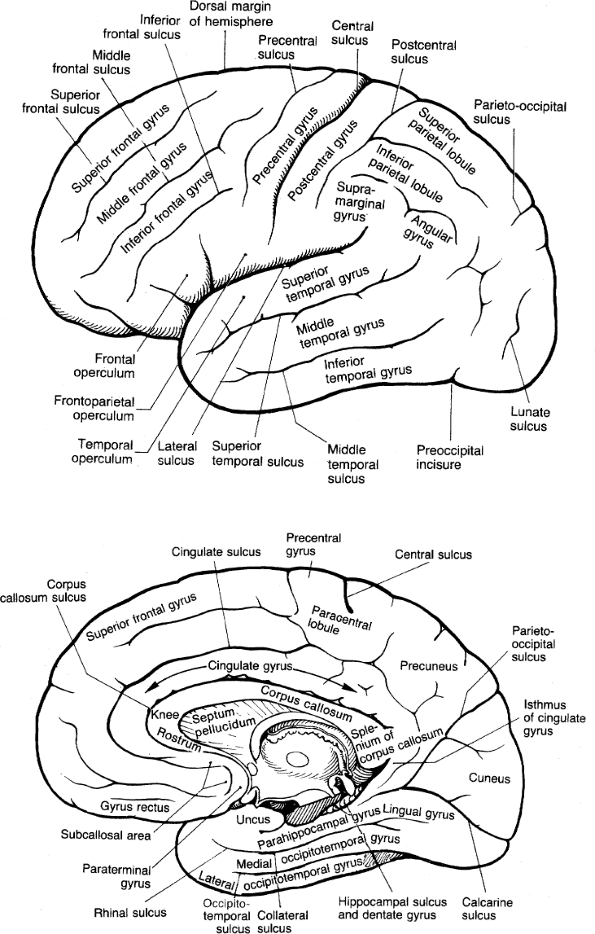Emergencies
Authors: Flaherty, Alice W.; Rost, Natalia S.
Title: Massachusetts General Hospital Handbook of Neurology, The, 2nd Edition
Copyright 2007 Lippincott Williams & Wilkins
> Front of Book > Emergencies
Emergencies
Adrenal crisis, p. 199
Anaphylaxis, p. 191
Bleeding, extracranial, p. 192
Cholinergic crisis, p. 82
Cardiac, p. 203
Coma, p. 29
Compartment syndrome, p. 95
Dystonic reaction, acute, p. 76
Empyema, CNS, p. 55
Epidural hematoma, p. 61
Extraocular paralysis, p. 47
Guillain-Barr syndrome, p. 37
Head trauma, p. 182
Hypertensive crisis, p. 210
Intracerebral hemorrhage, p. 64
Meningitis, p. 56
Myasthenic crisis, p. 82
Neuroleptic malignant syndrome, p. 170
Pituitary apoplexy, p. 190
Psychiatric, p. 97
Respiratory, p. 217
Serotonin syndrome, severe, p. 164
Spinal cord compression, p. 113
Status epilepticus, p. 97
Stroke, acute, p. 20
Stroke, cerebellar, p. 26
Subarachnoid hemorrhage, p. 61
Visual loss, sudden, p. 44
Wernicke's syndrome, p. 72
 |
Figure 1. Lateral and medial cortical surface anatomy. (Reprinted with permission from Duus P. Topical Diagnosis in Neurology. New York: Thieme, 1983:352.) FRONT COVER: New technology in perfusion imaging. This perfusion-weighted axial MRI section shows decreased cerebral blood flow (blue) after a stroke, in the territory of the patient's right middle cerebral artery. When compared to diffusion weighted images in the same patient, the technique allows identification of diffusion-perfusion mismatch, distinguishing irreversibly infarcted tissue from the at-risk ischemic penumbra. Courtesy of Dr. William Copen, MGH. |
EAN: 2147483647
Pages: 109